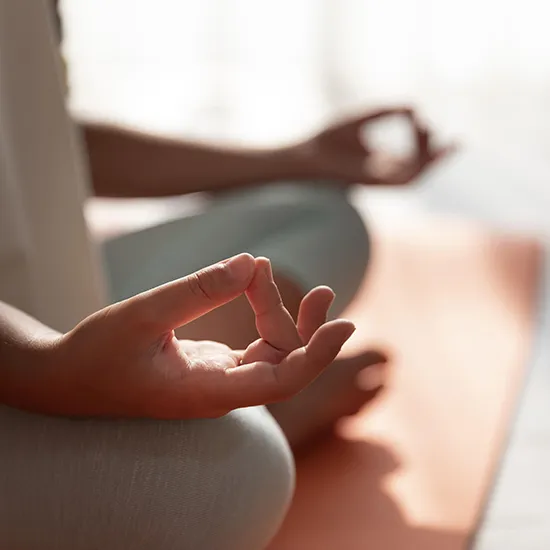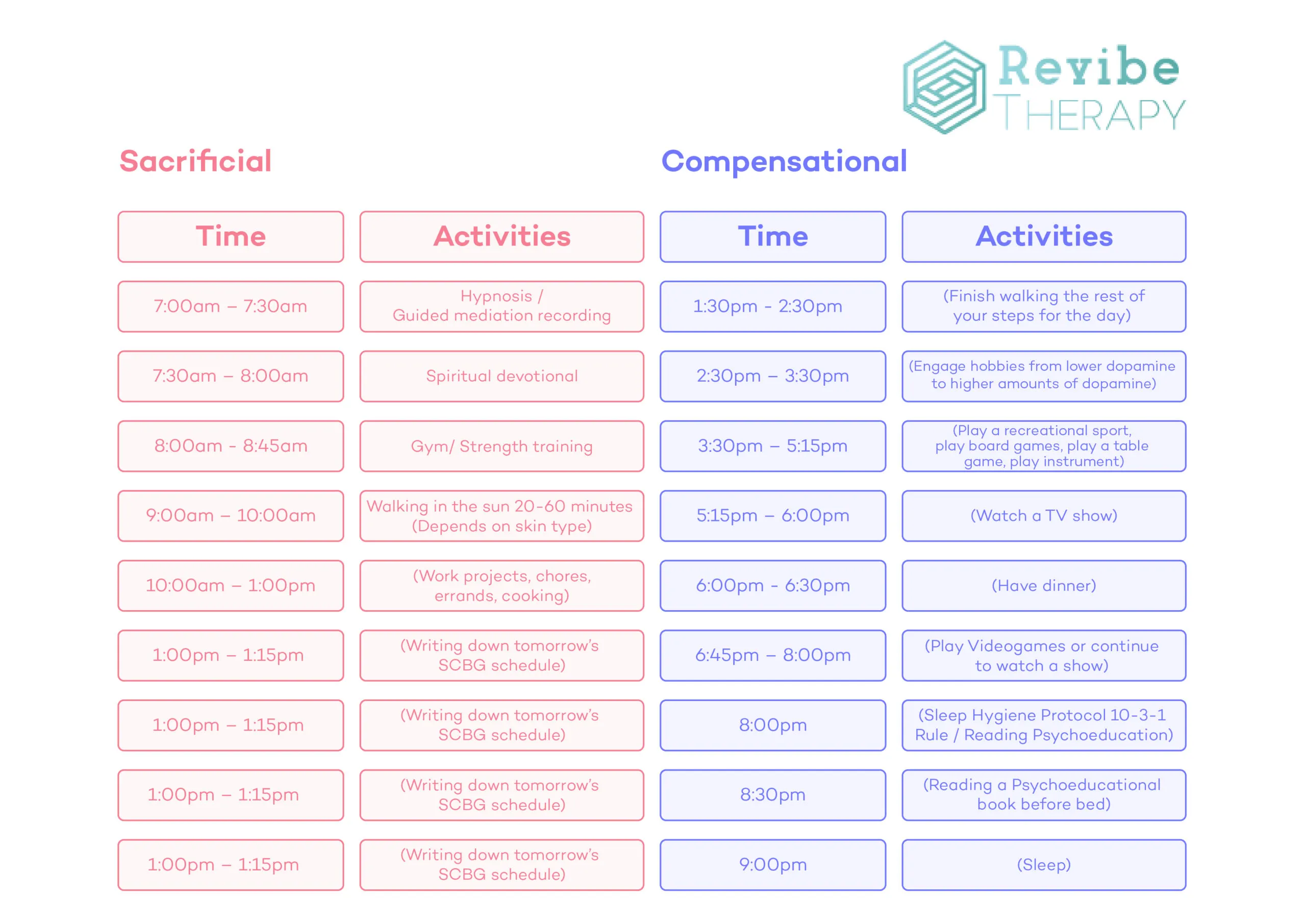Mastering Your Emotions and Dopamine: A Structured Daily Blueprint
If you often feel like your emotions control you rather than the other way around, or if you struggle with motivation, discipline, or an endless loop of chasing instant gratification, then this schedule is designed for you. It’s built around Sacrificial and Compensational Behavioral Goals (SCBG)—a method that allows you to delay gratification, release dopamine strategically, and take full control of your emotions.

Why Delay Gratification?
Because instant pleasure is a trap. The longer you can hold off on high-dopamine activities, the more control you gain over your thoughts, impulses, and emotions. Think about it: Who has more self-control—the person who eats dessert before dinner or the person who waits until the end of the meal? The person who waits because they’re training their brain to earn pleasure rather than just consuming it mindlessly.
Your day is structured into two phases:
- Sacrificial Phase (Morning-Early Afternoon) – Activities that require effort, discipline, and produce small dopamine releases. This is when you train your ability to push through discomfort and build mental resilience.
- Compensational Phase (Afternoon-Evening) – Activities that reward you with higher dopamine release, but only after you’ve done the work.
Each activity in this schedule is specifically designed to condition your mind and body for long-term fulfillment rather than short-term pleasure. Let’s break it down.
Sacrificial Phase: Small Dopamine Releases for Mental Strength
7:00 a.m. – 7:30 a.m. – Hypnosis / Guided Meditation Recording
Why start your day with hypnosis or meditation? Because your brain is most suggestible in the first 30 minutes after waking up. If you check your phone first thing in the morning, your dopamine receptors get flooded with quick stimulation, making the rest of your day feel dull. Instead, you start your day with intentional programming, setting your subconscious up for success.
- Hypnosis strengthens focus, self-discipline, and emotional control.
- Meditation increases awareness and prevents you from being a slave to every impulse.
- Both train you to resist distractions and manage stress before the day even begins.

7:30 a.m. – 8:00 a.m. – Spiritual Devotional
Your mind needs clarity, purpose, and grounding. A devotional practice (whether reading scripture, journaling, meditating, or prayer) puts you in a reflective state, helping you set the emotional tone for your day.
Ask yourself: Do you want your emotions to dictate your actions, or do you want your beliefs, values, and higher purpose to guide you? This is why you do this early in the day.

8:00 a.m. – 8:45 a.m. – Gym / Strength Training
This is when you tap into controlled stress. Strength training and exercise release small, steady amounts of dopamine, but more importantly:
- It builds mental resilience—you push through discomfort, which carries over into other areas of life.
- It increases testosterone and endorphins, making you more confident and energetic.
- It forces you into deliberate discomfort, proving to yourself that you can handle challenges.
Would you rather train your body and mind to be stronger, or train your body & mind to be weaker every morning? The answer is obvious.
9:00 a.m. – 10:00 a.m. – Walking in the Sun (20-60 Minutes, Depending on Skin Type)
Most people don’t realize how much light exposure affects dopamine production. Sunlight in the morning:
- Boosts serotonin, which later converts into melatonin (better sleep).
- Regulates your circadian rhythm, making your energy levels more stable.
- Puts you in a clearer mental state before diving into work.
If you skip this, your body struggles to know when to be alert and when to be calm.

10:00 a.m. – 1:00 p.m. – Work Projects, Chores, Errands, Cooking
This is where you grind through necessary tasks without distractions. No social media. No quick dopamine fixes. Just focused, intentional effort.
Why? Because delaying gratification now makes the rewards later feel earned rather than just being handed to you. This is where you train delayed dopamine release—you don’t get your fun yet.
1:00 p.m. – 1:15 p.m. – Writing Down Tomorrow’s SCBG Schedule
Why plan your next day now instead of waiting until later? Because when you write your plan while still in a disciplined state, you’re more likely to follow through.
You don’t wait until you’re exhausted or distracted to decide what needs to be done tomorrow. You make that decision while your willpower is still high.


Compensational Phase: Bigger Dopamine Rewards
1:30 p.m. – 2:30 p.m. – Finishing Your Step Count for the Day
By this time, your brain is craving some form of movement, so you use this window to finish your step goal and let your body naturally unwind from the earlier workload.
2:30 p.m. – 3:30 p.m. – Engaging in Hobbies (Low to High Dopamine Activities)
This is where you train dopamine scaling. You start with lower-stimulation hobbies (reading, writing, drawing) and gradually build up to more engaging activities.
Why not just jump into high-dopamine activities first? Because you’re teaching your brain to enjoy lower dopamine before indulging in high-dopamine activities. This helps prevent dopamine burnout.
3:30 p.m. – 5:15 p.m. – Playing Recreational Sports, Board Games, or an Instrument
This phase is about active engagement rather than passive consumption.
- Sports increase dopamine, but also include physical exertion.
- Board games require strategic thinking, which is engaging but not overstimulating.
- Instruments provide a creative outlet while enhancing focus.
5:15 p.m. – 6:00 p.m. – Watching a TV Show
This is your first passive dopamine reward—you’ve earned it by now. Because you delay passive consumption all day, you actually enjoy it more instead of just consuming out of habit.


6:00 p.m. – 6:30 p.m. – Dinner
Eating at this time helps maintain digestion and metabolic balance, keeping your energy stable before bed.
6:45 p.m. – 8:00 p.m. – Playing Video Games or Watching a Show
This is your highest dopamine reward of the day, and by this point, you’ve earned it.
Notice how you didn’t start your day with video games or binge-watching? That’s the difference between control and addiction.
Final Thought: Who’s In Control?
Are you in control of your brain, or is your brain in control of you? This schedule forces you to train your willpower, regulate your dopamine, and take command of your emotions. It won’t be easy at first, but the payoff is undeniable: more discipline, more focus, and more enjoyment of life’s rewards—when you actually earn them.



 Most often it is not the situation, but how we think about the situation that causes our feelings. How we think about situations is based on what we have learned and experienced in the past. Over time we may begin to react in ways that do not help us, and start feeling stuck and unhappy.
Most often it is not the situation, but how we think about the situation that causes our feelings. How we think about situations is based on what we have learned and experienced in the past. Over time we may begin to react in ways that do not help us, and start feeling stuck and unhappy. Dr. Ivey, Psy.D. completed her doctorate in Clinical Psychology with a concentration in Organizational Consulting at Pacific University’s School of Graduate Psychology in Oregon. For her dissertation, Dr. Ivey conducted qualitative research on the effects of workplace discrimination and microaggressions on minority Veterans’ overall job satisfaction with their military career. She completed the APA-accredited Psychology Internship training program and Postdoctoral Residency at the Orlando VA Healthcare System.
Dr. Ivey, Psy.D. completed her doctorate in Clinical Psychology with a concentration in Organizational Consulting at Pacific University’s School of Graduate Psychology in Oregon. For her dissertation, Dr. Ivey conducted qualitative research on the effects of workplace discrimination and microaggressions on minority Veterans’ overall job satisfaction with their military career. She completed the APA-accredited Psychology Internship training program and Postdoctoral Residency at the Orlando VA Healthcare System. I know you’re stressed and exhausted while trying to keep up with the world’s go go go trials, trying to do it all perfectly. This “hustle” mentality makes all of us prone to mistakes and poor decisions. Your mind is overthinking at such a high pace by now that you no longer know where to find the off button, or recall when you turned it on in the first place. Trust me, I’ve been there, and in that dark place is where you start to feel worried and fearful about the future because you don’t feel in control of the now. Sound familiar?
I know you’re stressed and exhausted while trying to keep up with the world’s go go go trials, trying to do it all perfectly. This “hustle” mentality makes all of us prone to mistakes and poor decisions. Your mind is overthinking at such a high pace by now that you no longer know where to find the off button, or recall when you turned it on in the first place. Trust me, I’ve been there, and in that dark place is where you start to feel worried and fearful about the future because you don’t feel in control of the now. Sound familiar? Often, when we seek support through therapy, we seem to underestimate the power of our own role in the healing process. We have all carried metaphorical luggage filled with experiences and events that have impacted our life. I know that it has been hard for you to seek support in untangling those moments from the past that now provoke stress, anxiety, frustration, anger, loneliness, sadness, guilt, depression, or hopelessness. The fact that you are reading this means that you have the intention to become the best version of yourself.
Often, when we seek support through therapy, we seem to underestimate the power of our own role in the healing process. We have all carried metaphorical luggage filled with experiences and events that have impacted our life. I know that it has been hard for you to seek support in untangling those moments from the past that now provoke stress, anxiety, frustration, anger, loneliness, sadness, guilt, depression, or hopelessness. The fact that you are reading this means that you have the intention to become the best version of yourself.